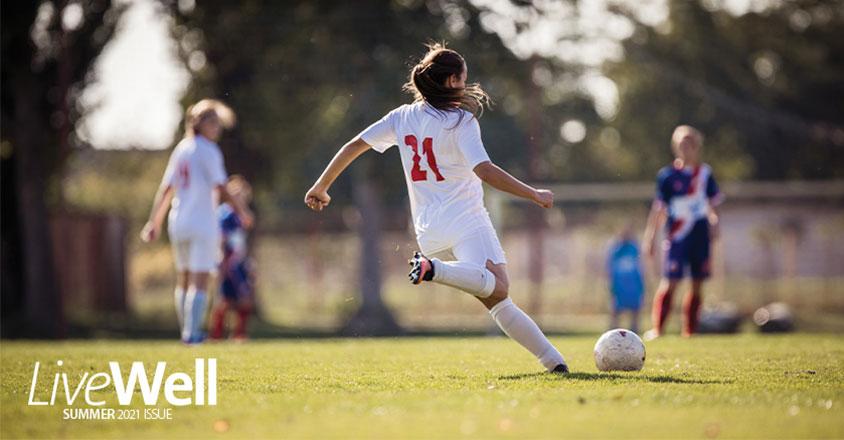

Tips to prevent children's sports injuries
Wednesday, September 1, 2021
While you can’t protect your young athlete from every injury, you can try to minimize the risk with a few basic steps.
When you’re the parent of an active child, you know that injuries are a part of the game. While you can’t protect your young athlete from every injury, you can try to minimize the risk with a few basic steps.
“It’s important to begin by making sure your child can participate in sports. We recommend children have a sports physical before they start – even if they’re younger than junior high age,” said Thai Trinh, M.D., fellowship-trained and board-certified orthopedic sports medicine surgeon, Genesis Orthopedic Sports Medicine. “If your child has an illness or problem with lungs, heart, vision, hearing, strength or movement, we can tell you how you can manage the problem so your child may still be able to be active.”
Reduce common injuries
Most sport-related injuries are from impact, overuse or poor body mechanics. To reduce your child’s risk of injury, you can:
• Always use the right safety gear. Learn about the proper fit of that gear. Replace it as your child grows.
• Make sure your child learns proper form and technique from a class, trained coach or athletic trainer.
• Teach your child to take pain and tiredness seriously and not ignore or “play through” it.
Avoid high-risk activities
Some activities are so high-risk that child health experts warn strongly against them. These include boxing, driving or riding on motorized bikes and vehicles and using trampolines. Even with constant adult supervision and protective netting, many children are injured on them.
Wear safety gear
Safety gear helps protect your child. Before your child starts a new activity, get the right safety gear and teach your child how to use it. Depending on the sport or activity, your child may need these items:
• Helmets help protect against injury to the skull. Brain damage is still possible even when a helmet is worn. Use a helmet for any activity that can cause a fall or an impact to the neck or head, such as bike riding, football, baseball, ATV riding or skateboarding.
• Shoes help protect feet from injury. Sandals or flip-flops are not safe for bike riding. Some sports require special shoes for support and safety.
• Mouthguards help prevent mouth and dental injuries. Use a mouth guard for sports such as basketball, football, wrestling, martial arts, gymnastics, baseball and soccer.
Prevent dehydration and heat-related illness
When your child is active and not drinking enough fluids, dehydration is a risk. The muscles get tired quickly, and your child may have leg cramps while walking or running. Playing hard and sweating without drinking fluids can cause dehydration and overheating. To prevent dehydration, teach your child to:
• Do activities during the coolest times of the day.
• Drink water throughout the day, every day.
• Drink extra water before, during and after exercise.
• Take breaks and drink at least every 15 to 20 minutes during exercise.
• Stop and rest if dizzy, lightheaded or very tired.
• Wear clothes that help cool the body.
• Water is the best choice for children and teens. A sports drink may be helpful if your child has exercised intensively or for a long time.



